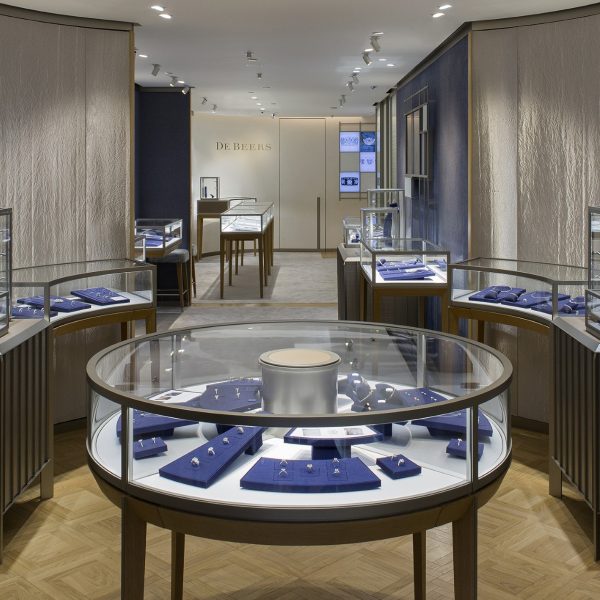
This week, De Beers took full control of the De Beers Diamond Jewellers retail chain. This makes sense, as De Beers always seemed more invested in the project than partner LVMH. And since, after 16 years, the 32-store retailer is still reportedly unprofitable, it wouldn’t be surprising if it has slipped down the luxury giant’s priority list.
But let’s look at why this unusual alliance came to be. In 2001, LVMH had little investment in branded jewelry and was looking for names in the space. (That changed in 2011, when LVMH bought retailer Bulgari.)
De Beers, meanwhile, wanted to benefit from LVMH’s significant expertise in brand building (De Beers’ Stephen Lussier originally called his company a “passive investor” in the venture). The joint structure also gave De Beers the retailer access to the United States, at a time when De Beers the miner was still banned from doing business here because of antitrust issues. “This new company is not De Beers and on that basis should be free to operate worldwide,” Lussier told me.
The key to the venture was De Beers’ high name awareness, which it considered an asset waiting to be monetized. Since, the thinking went, the general public associates De Beers with diamonds—for a while, its name appeared at the end of its “generic” diamond advertising—why not plaster De Beers on a diamond jewelry chain?
The retailer was also launched during De Beers’ early-2000s “transformation” strategy, Supplier of Choice, when it was urging its clients to go into branding. The chain, Lussier pronounced, represents De Beers putting “its money and reputation where its mouth is.”
The trick became turning De Beers, the name that people have heard of, into De Beers, a store that people will want to visit. But not all associations with the De Beers name were positive. It has been clearly, deservedly, linked with diamonds. But it’s also associated with monopoly and cartel. De Beers has not always had, shall we say, the most conventional corporate history.
A seeming blow came in 2006, when the movie Blood Diamond was released. Its plot involved a company clearly based on De Beers. That led to a slew of articles about the unsavory aspects of the industry’s history. Never mind that “the cartel” was already history by then. Perception is reality, especially when you are building a brand.
Before the movie, De Beers Diamond Jewellers saw the United States as a key market. At one point, it had 11 stores here. Now, it has four (one in Naples, Fla.; one in Houston; and two in New York City). Its new target is China, where reputational issues don’t mean as much, and where it appears to be doing well.
De Beers has also changed its focus. In line with the experimentation urged by Supplier of Choice, the company’s original store in London had a funky, exotic look that spotlighted De Beers’ African roots. (Original spokesperson: Iman.) But it has since transformed into a far more conventional jeweler, specializing in bridal.
Even so, the retail chain has always had an important limitation, as analyst Chaim Even-Zohar noted: Because of its corporate parent, it is singularly focused on diamonds. That has prevented it from stocking higher-margin items like colored stones or watches.
So what happens now? As many have noted, De Beers owns a diamond brand (Forevermark), as well as a retail chain. It makes a certain sense for them to work together. De Beers has said it doesn’t see this happening.
But this episode presents a few lessons. The first won’t surprise JCK readers: Retail is hard. Many jewelers predicted problems when the venture first launched. The second is that while name awareness is important, it doesn’t guarantee success. Otherwise, we’d all shop at Sears and eat Trump Steaks.
As then–De Beers managing director Gary Ralfe put it, way back in 2006, “It clearly takes more than the name of De Beers for the diamond jewelry to fall off the shelves.”
(Photo courtesy of De Beers Diamond Jewellers)
Follow JCK on Instagram: @jckmagazineFollow JCK on Twitter: @jckmagazine
Follow JCK on Facebook: @jckmagazine